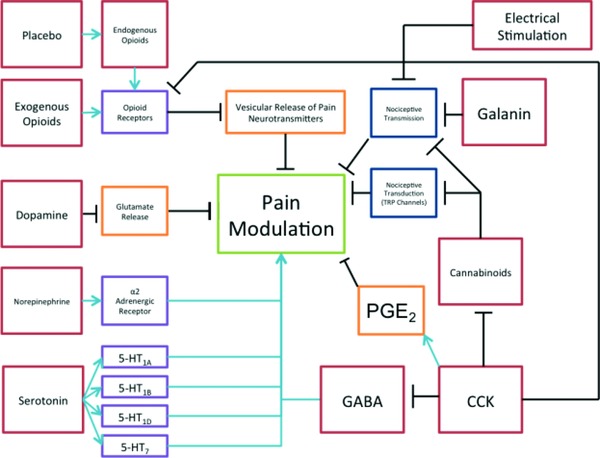Figure 4.

Schema for analgesia. This schematic diagram briefly illustrates the mechanism of analgesic action for a variety of modulatory processes. Starting from the top left and moving clockwise, the legend will briefly summarize each. Placebo modulation works via the endogenous opioid pathway. Endogenous opioids activate opioid receptors. The primary effect of activated opioid receptors is analgesia through inhibition of Ca++ and K+ channels, thus preventing the release of neurotransmitter vesicles. Electrical stimulation provides analgesia by increasing competitive, somatosensory signals, resulting in less nociceptive transmission. Galanin works by decreasing nociceptive transmission via GalR1, 2, and 3 receptors. Cannabinoids work by inhibiting TRP channels (pain transduction) and by decreasing nociceptive transmission via alpha‐3 receptors. Cholecystokinin (CCK) receptor activation decreases GABA and antagonizes opioid and cannabinoid receptors. Antagonizing CCK receptors can have an analgesic effect. GABA is an inhibitory amino acid. Agonistic activity of GABA receptors can diminish the sensation of pain. Serotonin mediates analgesia via a variety of 5‐HT receptors. Norepinephrine mediates analgesia via alpha‐2 receptors. Dopamine inhibits glutamate release, which decreases pain transmission. Exogenous opioids work via the same receptors and processes as endogenous opioids.
